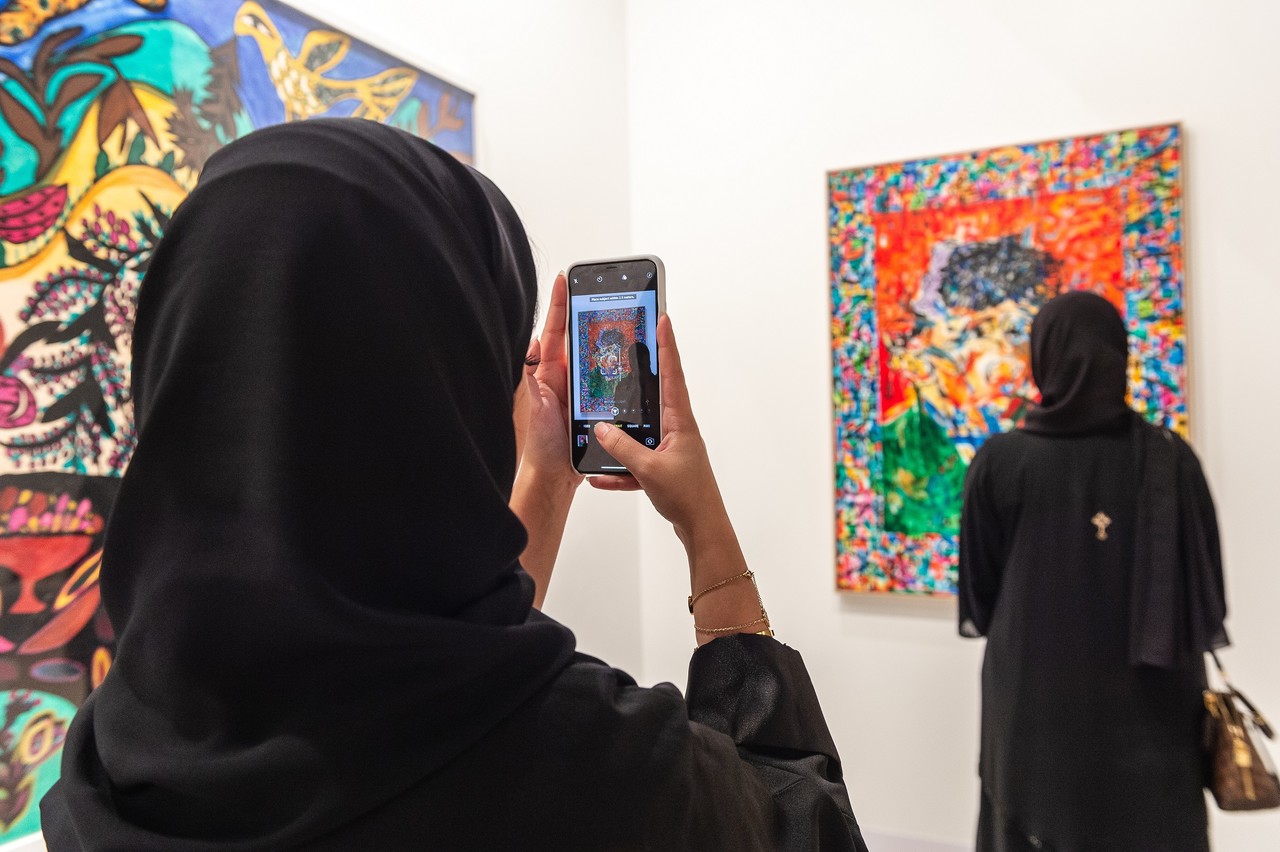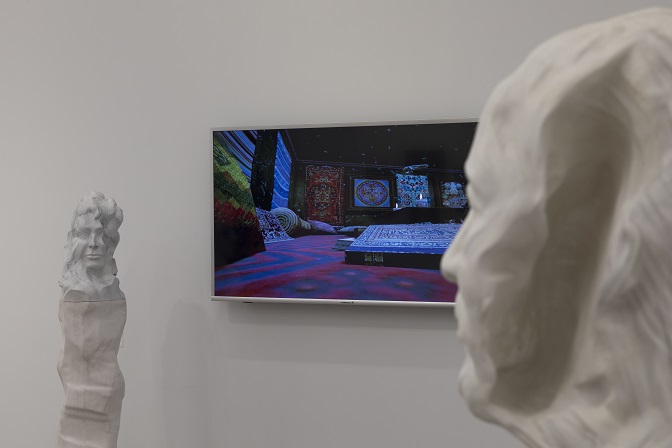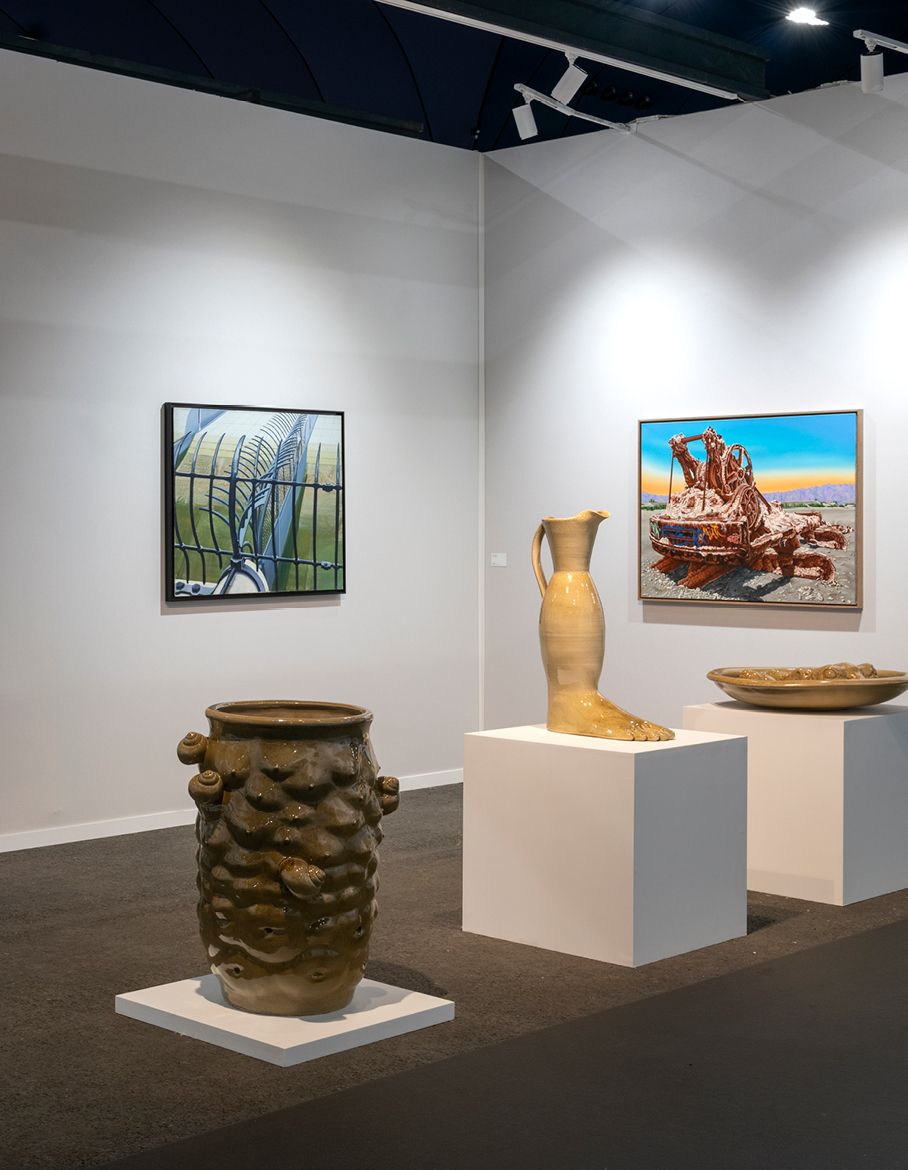Inspired by the theme of the Biennale Architettura 2025, “NON-Belief: Taiwan Intelligens of Precarity” is this year’s project for the Taiwan Pavilion, curated by National Cheng Kung University (NCKU) and organized by the National Taiwan Museum of Fine Arts (NTMoFA). The project launched on 10 May 2025 at Palazzo delle Prigioni in Venice, Italy.
This year’s La Biennale di Venezia, Biennale Architettura 2025, holds the title “Intelligens. Natural. Artificial. Collective.” The curator Carlo Ratti uses the term “Intelligens”, highlighting the last syllable, “gens”, which means “people” in Latin, to discuss three types of intelligence—natural, artificial, and collective—and their role in architectural design amidst contemporary environmental and climate challenges. The Taiwan Pavillion this year is organized by the National Taiwan Museum of Fine Arts (NTMoFA), titled “NON-Belief: Taiwan Intelligens of Precarity,” and it is curated by National Cheng Kung University (NCKU). The exhibition, which opened 10 May 2025, is held at Palazzo delle Prigioni in Venice, Italy, and will remain on display until 23 November 2025.

Inspired by the theme of the Biennale Architettura 2025 and Robert Smithson’s theory of ‘non-sites’, “NON-Belief: Taiwan Intelligens of Precarity” examines Taiwan’s ‘non’-beliefs on TSMC chips, high-speed, and the relentless pursuit of efficiency and control—forces that are reshaping the world’s operations in a geopolitically precarious, globalized landscape. Taiwan offers a model of embodied intelligens in its architecture, showcasing how life adapts and transforms to create a resilient, self-sustaining island republic in our collectively uncertain and fragile future.
“NON-Belief: Taiwan Intelligens of Precarity” is curated by a team from the NCKU Department of Architecture, led by curator and department chairman Cheng-Luen Hsueh, with co-curators Ping-Sheng Wu, Sung-Chang Leo Chiang, and Meng-Tsun Su. The team includes advisor Wei Tseng and international advisor and joint researcher Professor Brian McGrath from Parsons School of Design in New York. The exhibition is created in collaboration with, and partially sponsored by, E Ink Corporation, HongSen Intelligent Technology, and Xxentria Technology Materials.


I spoke with the curators Mr. Cheng-Leun Hsueh and Mr. Meng-Tsun Su about the project; delving deep into the main concepts and premises shaping the project.
Maie El-Hage: Thank you for this interview. I have a few questions to better understand and appreciate the project.

Maie El-Hage: The title of the Biennale Architettura 2025 is “Intelligens. Natural. Artifical. Collective”. How do you see your project situating itself within this theme/topic?
Mr. Cheng-Leun Hsueh and Mr. Meng-Tsun Su:
Building on the Biennale Architettura 2025’s theme, “Intelligens. Natural. Artificial. Collective,” the exhibition reexamines Taiwan’s “drifting intelligens” grounded in its specific historical context. In response to unpredictable natural disasters and geopolitical uncertainties, it reflects on the resilience of architecture operating within the gray zones of a globalized and precarious future.
Maie El-Hage: Tell me about the title of the project “NON-Belief: Taiwan Intelligens of Precarity” and its conception.
Mr. Cheng-Leun Hsueh and Mr. Meng-Tsun Su:
The title of the project, “NON-Belief: Taiwan Intelligens of Precarity,” draws from the dual concept of belief and [non]-belief, reflecting Taiwan’s unique position in a rapidly changing geopolitical landscape. The term “NON-Belief” signifies the questioning and negotiation of established norms, beliefs, and systems—particularly in response to technological advancements, environmental challenges, and socio-political instability. It is not an outright rejection of belief, but rather a space of constant redefinition and adaptation.
“Taiwan Intelligens of Precarity” further explores this idea by considering how the island’s architecture responds to precarious conditions, both natural and man-made. This “intelligens” is not fixed or deterministic; it is an adaptive, localized form of intelligence that emerges from the uncertainty and challenges faced by Taiwan. The exhibition investigates how architectural practices, technologies, and social structures come together in a collective, adaptive response to Taiwan’s dynamic and fragile context, positioning it as a resilient island navigating the complexities of a precarious future.

Exhibitor Name: Ping-Sheng WU, Shih-Hua YEN, Po-Min KUNG
Exhibition Teams: Yi-Hsien TSENG, Yen-Shan LEE, Xiao-Pei CHANG, Yi-Fang LAI, Ting-Chen WU, Tsai-Yu HUANG, Po-Yuan SU, Jasmine KUO
Maie El-Hage: How is the binary dialectic of “belief” and “non-belief” unique to Taiwan?
Mr. Cheng-Leun Hsueh and Mr. Meng-Tsun Su:
In Taiwan, the dialectic of belief and non-belief is not oppositional, but fluid, intertwined, and mutually convertible. Consider the Baishatun Mazu pilgrimage (白 沙屯媽祖進香), one of Taiwan’s most vibrant religious phenomena. Each year, tens of thousands follow the goddess Mazu on an unplanned journey across hundreds of kilometers. There is no predetermined route, no rigid ritual structure—only collective trust in the unknown. This form of “belief” thrives in uncertainty, not in doctrine, but in movement, response, and shared intuition. At the same time, the participants’ acceptance of unpredictability reflects a cultural comfort with “non-belief”—with doubt, ambiguity, and improvisation.
This phenomenon resonates deeply with the curatorial framework of the Taiwan Pavilion at the Venice Biennale: “NON-Belief: Taiwan Intelligens of Precarity.” Rather than presenting architecture as a fixed ideology or closed system, the Pavilion embraces instability as a generative condition. From popular faith in semiconductors to grassroots adaptations of spatial boundaries, Taiwan exhibits a mode of collective intelligence that is responsive, tactical, and inherently negotiable.
In this context, belief and non-belief do not cancel each other out; instead, they animate a dynamic in-between. Architecture in Taiwan operates in this space— between control and drift, authority and improvisation, faith and skepticism. It is this unique cultural capacity to oscillate and adapt that defines Taiwan’s architectural intelligens: a wisdom that arises not from certainty, but from the resilient negotiation of uncertainty.

Exhibitor Name: Tzu-Ping LIN
Exhibition Teams: BCLab
Team Members: Szu-Yi LEE
Maie El-Hage: What can you tell me about the relevance of the three sub-topics: Efficiency, Technology and Control? And how do they shape the curatorial vision for the project?
Mr. Cheng-Leun Hsueh and Mr. Meng-Tsun Su:
Efficiency, Technology, and Control are three critical lenses that interrogate Taiwan’s spatial strategies:
- Efficiency questions how high-speed development reshapes ecological and urban systems.
- Technology unpacks the ecological costs of chip industries and green energy.
- Control reveals subtle mechanisms of power embedded in sensory-motor environments.
These threads build a curatorial structure that invites reflection on what we choose to believe in—and what we overlook.
Maie El-Hage: Describe for the audience the design of the exhibition space around the concept of ‘island’.
Mr. Cheng-Leun Hsueh and Mr. Meng-Tsun Su:
The exhibition space unfolds as a topographic metaphor of “Island – Archipelago – Peninsula.” At its heart lies a “Technology Island” illuminated by electronic paper displaying Taiwan’s landscapes. Around it, 12 research models form an archipelago of proposals. A glowing “Votive Lamp Wall” anchors the peninsula of belief, linking the entire space. This scenography reflects Taiwan’s composite identity as a technological, ecological, and spiritual island.

Exhibitor Name: Bio-architecture Formosana, CRA Carlo Ratti Associati
Team Members: Ching-Hwa CHANG, Ying-Chao KUO, Chin-Wei LEE, Chang-Lien LIN, Hsin-Yichen CHEN, Yi-Jung LO, Yen-Hsuan CHEN, Kuan-Yin WANG, Tzu-Wen LIN, Klaudia Stefanowska, Kai-Chi CHEN, Prof. Carlo RATTI, Saverio PANATA, Ben HANSEN, Chiara BORGHI, Serena GIARDINA, Francesca MARINO, Greta STEFANOVA, Luca BUSSOLINO, Gary Di SILVIO, Gianluca ZIMBARDI, Pasquale MILIERI
Maie El-Hage: Tell me about the curatorial vision in terms of the space design and scenography.
Mr. Cheng-Leun Hsueh and Mr. Meng-Tsun Su:
Our scenography is deliberately low-tech and atmospheric. Rather than relying on digital simulations, we create a space of contemplation through tactility, light, and spatial arrangement. Paper, a material associated with both fragility and transmission, becomes the core medium. The terrain folds, the glowing walls, and the soft rhythms of projected landscapes are intended to create a spatial rhythm—an ebb and flow between solidity and void, much like belief and non-belief themselves
Maie El-Hage: The Palazzo delle Prigioni is a historic structure and a former prison. What inspires you about this venue? How do you see the project manifesting in this unique space?
Mr. Cheng-Leun Hsueh and Mr. Meng-Tsun Su:
The Palazzo delle Prigioni is not merely a venue but a metaphor.
As a former prison adjacent to the Doge’s Palace and connected by the Bridge of Sighs, it embodies a suspended space between confinement and passage, visibility and obscurity. For the Taiwan Pavilion, a project rooted in precarity and negotiation, this in-between condition is not a limitation—it is precisely the inspiration.
Taiwan’s identity, like this building, exists in the margins—politically unrecognized by the Biennale’s national framework, yet persistently present. The space’s barred windows, uneven stone floor, and prohibition against attaching anything to the walls become part of our architectural language. We respond not by resisting these constraints, but by weaving with them.
The Techno-Island installation, floating above the sloping stone, mimics Venice’s own wooden pile foundations. Built atop hundreds of adjustable banquet table legs, it holds e-paper modules that shimmer with environmental data and collective memory, offering a high-tech counterpoint to the weight of stone, time, and surveillance.
In this space of former judgment and silence, Taiwan’s voice materializes—not as a monolith, but as an island of shifting belief, suspended yet resilient, drifting yet luminous.

Maie El-Hage: I am very intrigued by the ‘Votive Lamp Wall’ installation. Tell me more about the relevance of this component and its context.
Mr. Cheng-Leun Hsueh and Mr. Meng-Tsun Su:
The “Votive Lamp Wall” is a poignant installation that juxtaposes traditional Taiwanese religious practices with modern technological elements. The front features traditional votive lamps, while the back reveals chip controllers, symbolizing the convergence of faith and technology. This installation serves as a metaphorical “peninsula” within the exhibition, bridging the realms of belief and non-belief, and inviting contemplation on the coexistence of tradition and innovation.

Maie El-Hage: Can you share who were the contributing researchers, architects, designers and documentary director?
Mr. Cheng-Leun Hsueh and Mr. Meng-Tsun Su:
Led by curator Cheng-Lun Hsueh and co-curators Bing-Sheng Wu, Meng-Tsung Su, and Tsung-Chang Chiang, the Taiwan Pavilion features 17 teams comprising faculty and students from National Cheng Kung University and practicing architects. 13 teams produced interactive architectural prototypes. Director Tsung-Chang Chiang also contributes his Oscar-nominated short film Island in Between. Advisors include Professor Wei Zeng and Professor Brian McGrath. Industry partners such as E Ink and Holsense Technologies provided technical and creative support. Contributors were selected based on the depth of their architectural engagement and relevance to the curatorial themes.
Maie El-Hage: Finally, what would you like to share with the international public about your project?
Mr. Cheng-Leun Hsueh and Mr. Meng-Tsun Su:
We invite the international public to see Taiwan not as a fixed identity but as a living condition shaped by drift, uncertainty, and adaptability. Our project is not about showcasing perfected buildings or national achievements. It is about revealing how architecture in Taiwan emerges from negotiation: with nature, with policy, with belief, and often, with contradiction.
In a world increasingly marked by precarity—ecological, political, and spiritual—we believe Taiwan offers a different kind of wisdom. It’s not built on control or certainty, but on the capacity to dwell in between. To shift, to bend, to recompose. This is what we call intelligens—an intelligence rooted in collective resilience and situational awareness.
We hope visitors leave the pavilion not only with impressions of Taiwan but with new questions about their own beliefs, boundaries, and how architecture might serve as a soft and drifting force in the face of a hardening world.
Maie El-Hage: Thank you for your answers, and all the best for this ambitious project!

Exhibitor Name: Meng-Tsun SU
Exhibition Teams: Tunghai University Department of Architecture
Team Members: Hao-Yuan CHIANG, Che-Lun LEE
The Taiwan Pavilion has launched at the Biennale Architettura 2025 on 10 May 2025 and will remain open to the public until 23 November 2025. Make sure to pass by and see this amazing project!
Follow the Taiwan Collateral Event at Venice Architectural Biennale on Instagram here.
Follow the National Taiwan Museum of Fine Arts on Instagram here.
Follow National Cheng Kung University on Instagram here.
Follow Hao Liao Creative on Instagram here.
Follow the author Maie El-Hage on Instagram here.



